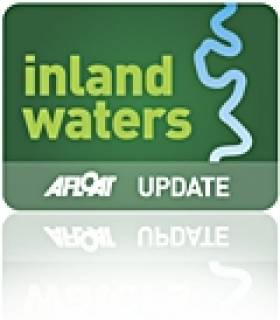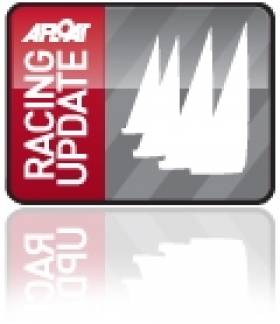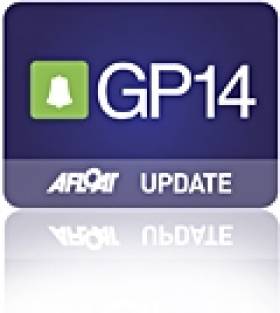Displaying items by tag: Dinghy
Dinghies Turnout for Royal Cork O'Leary Winter League
#royalcork – There were 23 entrants yesterday for Royal Cork YC's 'O'Leary Insurances' Winter league. An all–in start featured cruisers and 1720s. Also running from Royal Cork was a Laser and 4.7 dinghy series from Cork Harbour's Grassy race area. Gusty westerly winds produced some lively sailing conditions. The fleets were joined by a number of Topper sailors, already in training for 2015! Scroll down for photos below by Bob Bateman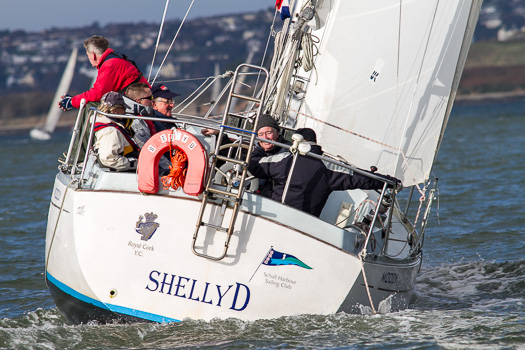
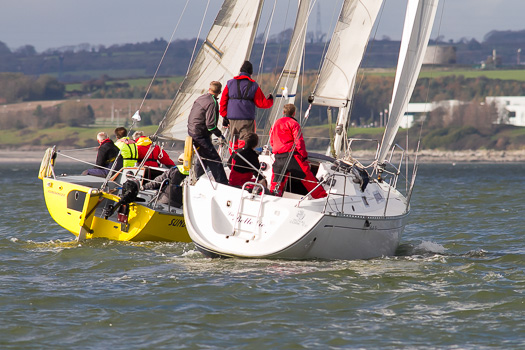

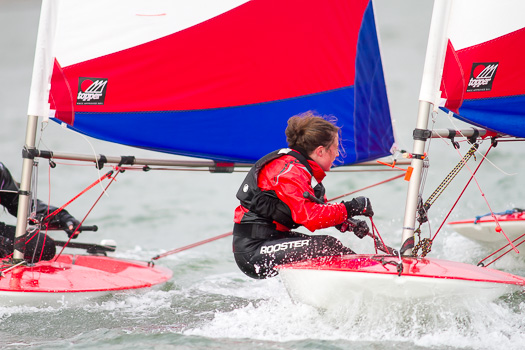
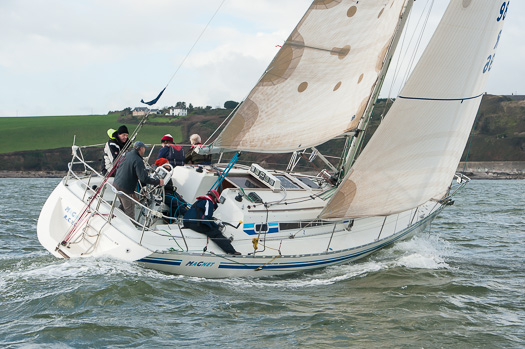

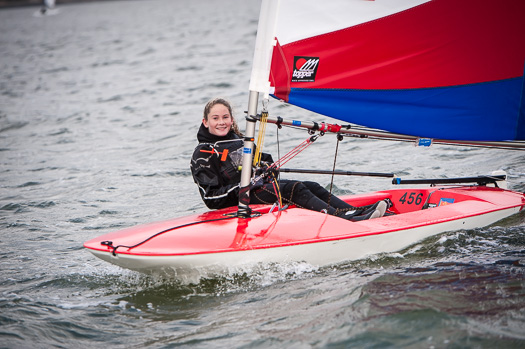

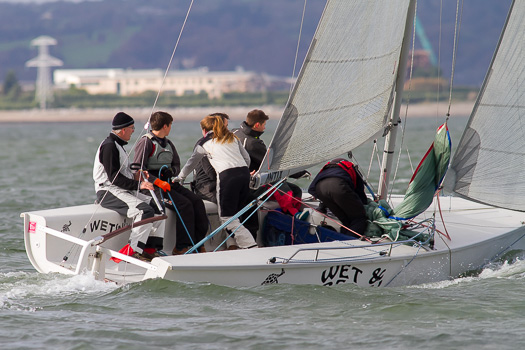
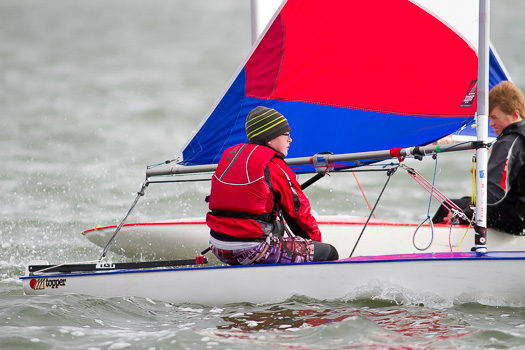
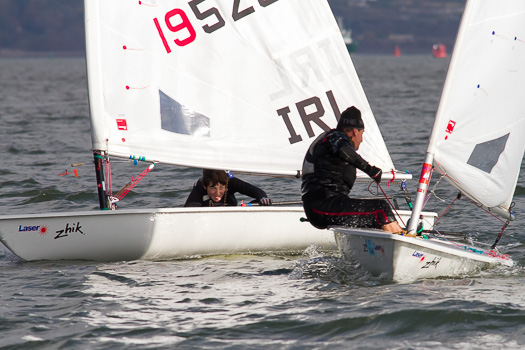
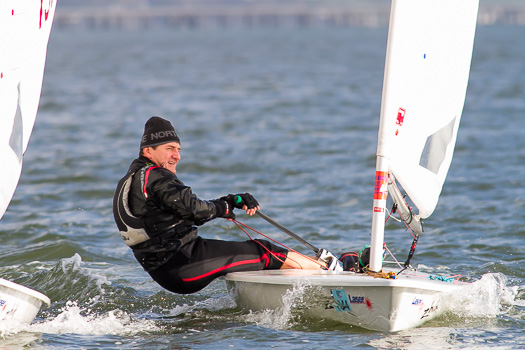

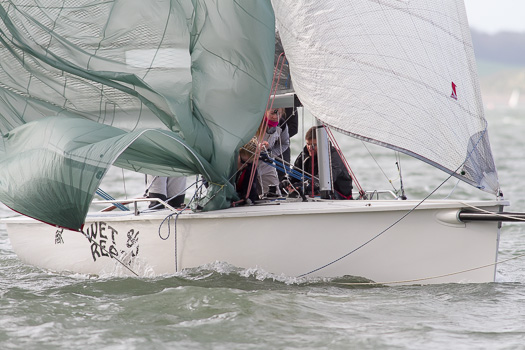
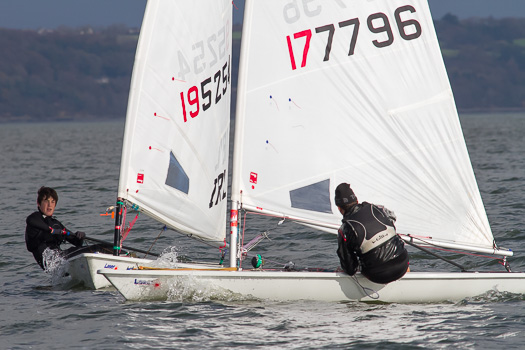
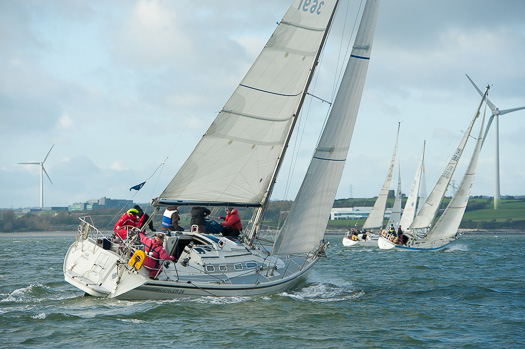
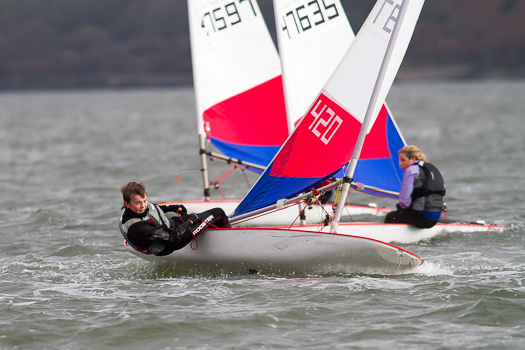


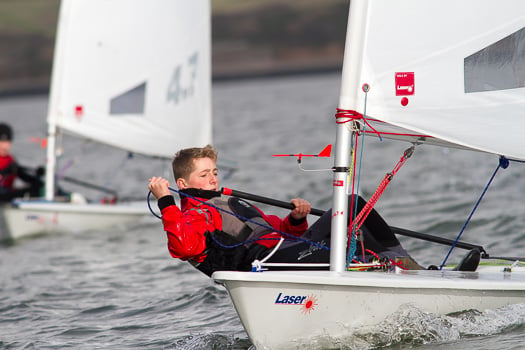
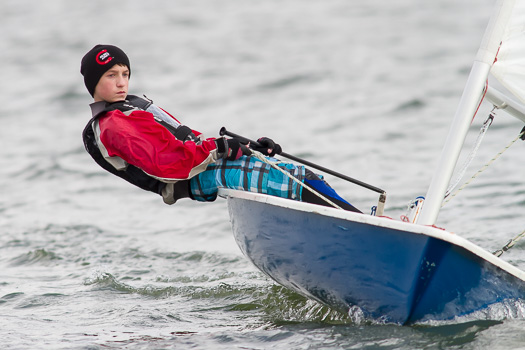

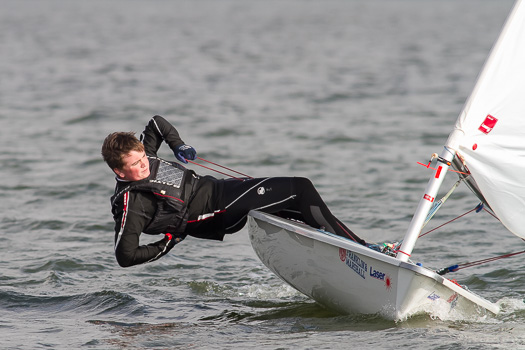
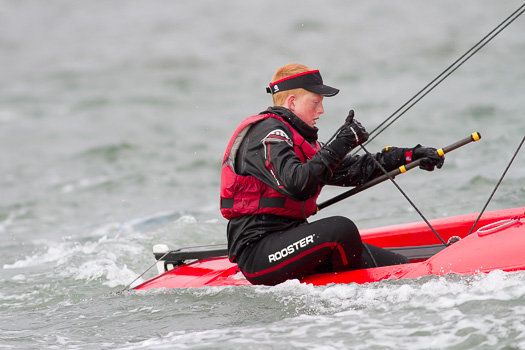
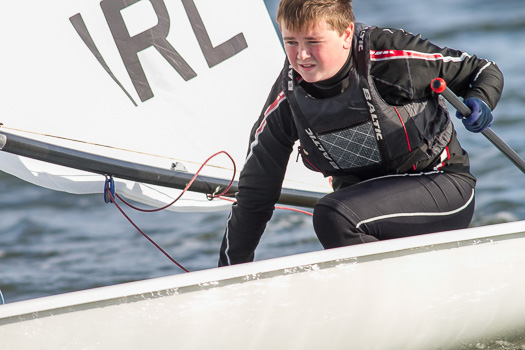
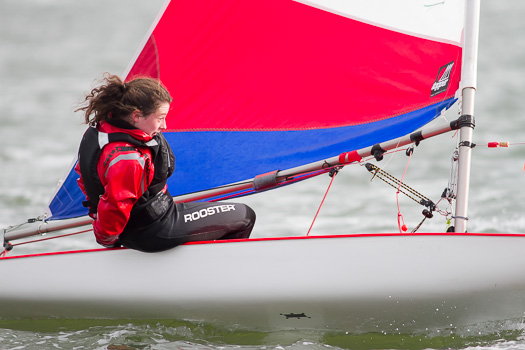
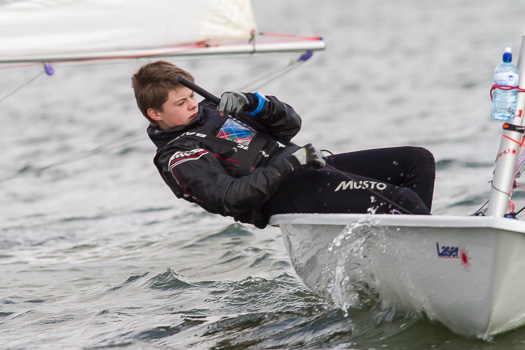

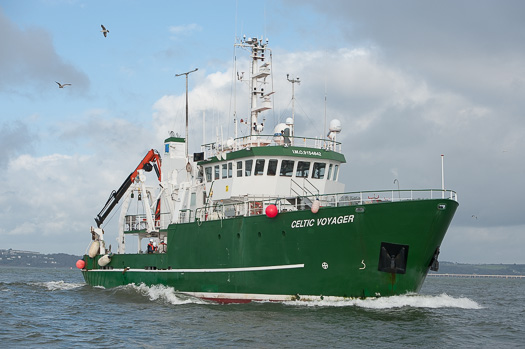
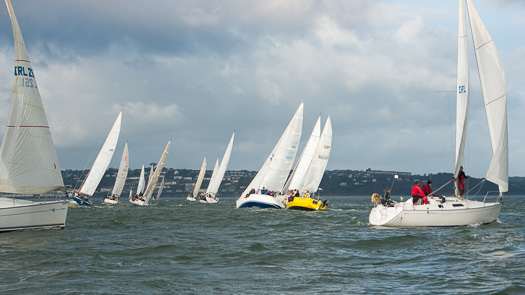
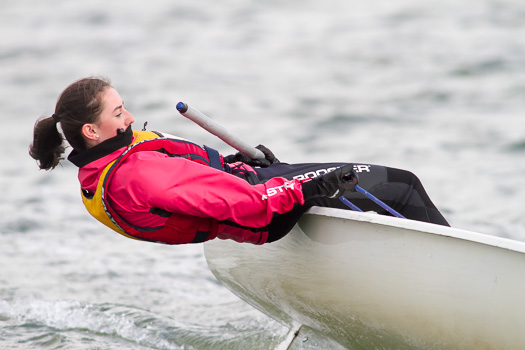
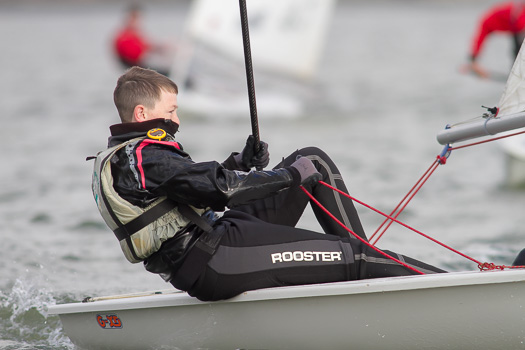
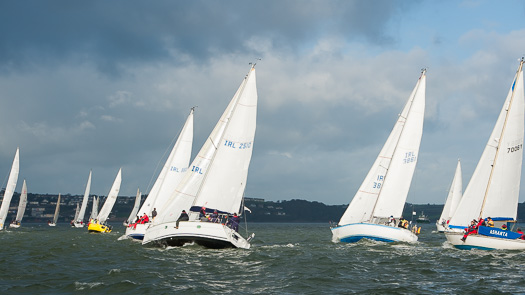
Howth Yacht Club Wins for Quinn, Cull In Laser Dinghy Frostbite Series
#lasersailing – Thirty seasoned Laser sailors were greeted with a Westerly at 8knots at Howth Yacht Club for the second race of the 40th Laser winter series, slightly calmer conditions than last week! The Race Committee had their work cut out for them as both the wind and fleet were making things difficult.
After a General Recall, the fluctuating wind delayed the restart and eventually stabilized from a SW direction. Taking no prisoners, the RC went with a Black flag and needless to say managed to catch one over the line early! Half of the fleet went left and the other right. Things started to get tricky at the top mark with the boats from the right just edging out those from the left. A bunch that included Daragh Kelleher, Ian McSweeney, Oliver Keenan, Ronan Cull, Dave Quinn and Mike Evans all rounded in quick succession. Those who stayed to the left of the run or up tide managed to make some good gains and round the LW mark in good position. Sailors jockeyed for position throughout the race as picking up the little puffs and shifts on the beat made for tight tactical racing.
Ronan Cull was the one and only sailor falling foul of the Black Flag, leaving Dave Quinn to take the bullet ahead of Oliver Keenan.
Race 2 got underway in lighter conditions after the wind veered back to the West. A clean start this time, and a last minute right hand shift biased the committee boat for the start. Some boats headed left, but the leaders came in from the mid-right once again! Dave Quinn and Troy Hopkins took the lead around the WW mark with the fleet in hot pursuit. Darrell Reamsbottom showed some great pace on the light air reaches to pull up to third by the Leeward mark, and eventually climbed to first early on into the second beat.
Heart Rates began to rise as the Race Committee shortened the course and sailors could see the finish line at the WW mark. The three boats left of centre were looking pretty good until Darragh Sheridan put in a "Brilliant Performance" (best of luck Daragh with the new book) on the last beat to throw the cat amongst the pigeons leading a bunch of boats in from the right in slightly better breeze. The wind died in the final third of the beat, and Ronan Cull showed good speed in the home straight to take the win. Closely followed by Oliver, Daragh, Darrell and Dave, who were only separated by a mere boatlength on the finish line.
Race 1 - Standard fleet:
1. Dave Quinn
2. Oliver Keenan
3. Ian McSweeney
4. Darrell Reamsbottom
5. Darragh Kelleher
Race 2 - Standard fleet
1. Ronan Cull
2. Oliver Keenan
3. Daragh Sheridan
4. Darrell Reamsbottom
5. Dave Quinn
Ilen Project 'CityOne' Dinghies for Culture Night, Limerick City
#cityone – The Ilen School's new sailing boat CityOne will be on exhibition for Culture Night in Limerick City, Friday September 19th. A fleet of four CityOnes will be on view from 6pm to 9pm on Howley's Quay.
Culture Night, an annual all-island public event which celebrates culture, creativity and the arts, is a wonderful platform from which to exhibit the boats, whose dynamic graphics are the four selected designs from a very sucessful CityOne International Graphic Arts Competition. The boats have recently been designed and built in the Ilen School, Limerick City, as part of City of Culture celebrations.
The CityOnes will race the following day, September 20th from 1.30pm Saturday at Howleys Quay, Limerick City.
Devoti D-Zero Dinghy to Debut on Dublin Bay
#D-Zero – First there was the RS Aero to visit Ireland and now there's the D-Zero. It's another single-handed dinghy markque making its debut on Dublin Bay later this month when two of the Devoti made singlehander dinghies are launched on Irish waters and made available for demonstration sails.
The D-Zero is based on the Punk dinghy, the unique concept designed by Dan Holman. The D-Zero is a single handed performance dinghy, fully fitted by Harken, with a two piece carbon mast and an 8.1m2 sail, raised by a halyard, and a carbon boom. The hull is 4.2m long overall with a beam of 1.42m.
The Punk has already enjoyed considerable success on the UK dinghy racing circuit. Helmed by Dan himself, on PY 1050, the Punk has made a memorable impression at some of the UK's best known handicap events. Aimed at helms from beginner to expert, the D-Zero can be car topped or carried on industry standard compatible road trailers.
The Irish visit is being organised by DBSC dinghy sailors.
New Irish Sailing Dinghy Design 'The City One' Launched in Limerick
#cityone – This year's Gandelow Races to be held at Howley's Quay, in Limerick City Centre at 1.30pm Saturday 20th September includes a special event: The CityOne Limerick Sailing Challenge, which involves the launch and racing of the new, spectacular performance sailing boats designed for racing between the bridges of Limerick. As Afloat previously reported the design of the boat is from the drawing board of Theo Rye.
The event is also attracting big interest from Gandelow teams in Limerick City and County and County Clare.
The first race starts at 1.30pm at Howley's Quay, Limerick.
Blackwater River Dinghy Cruise Voyages from Youghal to Villierstown
#dinghycruise – As previewed by Afloat.ie, last Saturday four visiting and five local GP14 dinghies crewed by 21 seafarers and two sea dogs set off from Youghal quay in County Cork at low water on the second annual Y2V Blackwater river cruise writes Norman Lee.
Molly the younger sea dog soon got the hang of scrambling to windward on almost every tack but sometimes preferred to stay to leeward to view the wildlife better and she probably set the tone for the many pre teen crews getting a taste for competitive/fun sailing in their respective dads racing machines.
The youngest boat was a beautiful Duffin built this year for Simon Culley and Libby Tierney of Blessington and the oldest, a lovely Bell Woodworking boat nearly 60–years–old and still in perfect fettle, now owned by 16–year–old Jack Nolan of Youghal.
One Mermaid and one Feva came along for the trip which included forming part of the backdrop for a society wedding in Ballintra House a classic yellow mansion, where a band serenaded us as we sailed by on a wide sweep of the river.
Villierstown Boating & Activities Club members at their brand new three week old facility on the riverbank couldn't do enough to make us welcome with hot soup tea and sambos and home cookies when we arrived and a massive fry on Sunday morning and free run of their facilities for the duration.
The value these guys have got from their sports council grant is unbelievable and great credit to all concerned and the welcome the GP visitors get in both Villierstown and Youghal makes it very possible this will be a well attended new addition to the annual GP circuit where the utility design of our boat comes to the fore.
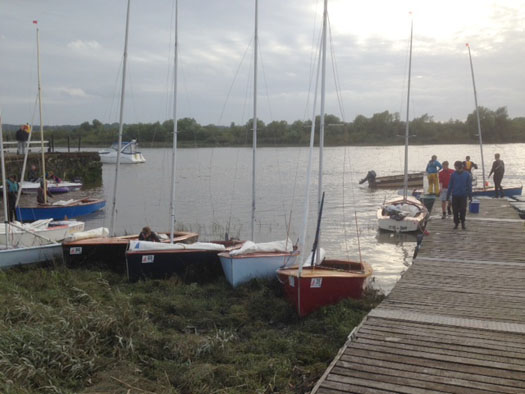
GP14s berth on the river bank
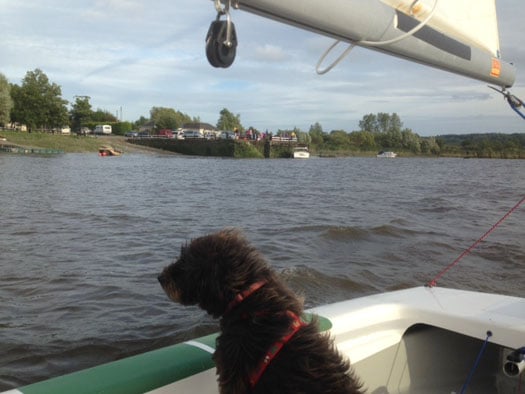
Molly, just one of two seadogs on the cruise keeps a look out
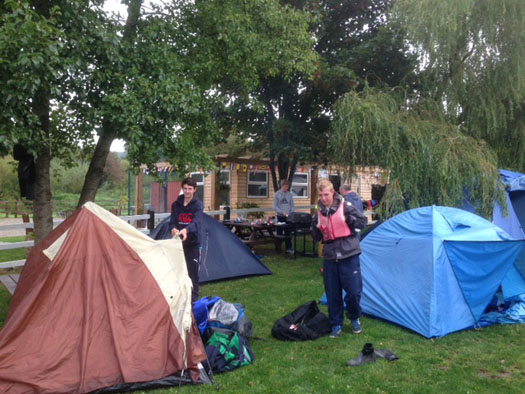
Getting the tents ready at the new Villierstown clubhouse
More on dinghy cruising possibilities here: Is 'Adventure Sailing' a New Tack for Dinghy Sailors?
Man Rescued Sailing To America In Flimsy Dinghy
#Rescue - Lifeboat volunteers on the Dorset coast went to the rescue of a man attempting to sail to America in a 14ft dinghy, as NewsTalk.ie reports.
Mudeford RNLI were launched after reports from a passing yacht that had concerns about the solo offshore boater.
On arrival, the lifeboat crew found the Bulgarian national on the dinghy was "exceedingly cold, wet and violently ill" yet was refusing their assistance.
They soon ascertained that the 30-year-old man, who has a US visa, had bought the dinghy earlier that day, packed it with some meagre supplies – without any suitable safety equipment or navigation aids – and set out to cross the Atlantic.
"He would have died [if we left him there," said lifeboat crewman Pete Dadds. "He was severely sea sick, he had the first signs of hypothermia and his boat was filling up with water."
NewsTalk.ie has more on the story HERE.
Abersoch Dinghy Week 2014 Celebrates Largest Fleet Since 2007
#abersochdinghyweek – The dinghy is dead? Think again. Across the Irish Sea in North Wales, Abersoch dinghy week has had its biggest entry since 2007.
It promised to be bigger and better and, with 273 entries across 51 fleets the Crewsaver Abersoch Dinghy Week 2014 was certainly an event not to be missed.
The extremely warm weather enabled the competitors to top up their sun tans! This did however result in light winds all week. This did not dampen the sailors' spirits with hot sun, sea & sand there was still plenty of fun to be had.
This year saw the successful introduction of a smaller course with committee boat starts for the Topper, Tera and Optimist fleets, resulting in the spectacular sight of 50 youth boats enjoying the competitive side to sailing.
Crewsaver Abersoch Dinghy Week Organiser Andy Teague says 'I am amazed at the number of entries with competitors coming from as near as Pwllheli and as far as Dubai. I would like to thank everyone for making it such a great event.'
Hannah Burywood, Marketing Coordinator for Crewsaver comments 'Crewsaver Abersoch Dinghy Week is an extremely well organised, enjoyable event that every dinghy sailor should have noted in their calendar.'
With this in mind jot the 2015 date in your calendar: Registration, 25th July 2015 Sailing, 26th - 31st July 2015. Could Ireland revive its own dinghy week concept?
Complete results here
#GP14World – There's less than a month to go before the start of the GP14 World Championships to be held at East Down Yacht Club.
This biennial event will see one of the biggest fleets of single class twin crew dinghies assemble in Northern Ireland this year. With an international following the event has attracted around 200 competitors (Helm and Crew) some from as far away as Australia. Hosted by East Down Yacht Club (EDYC) the event will take place on Strangford Lough with races being held daily over the week-long event. The main sponsor of the event is Down District Council with Exe Sails the title sponsor and to mark their involvement Exe Sails are offering a promotional discount on their GP14 Sails especially for the event.
With previous World Championships being held in locations such as Sri Lanka (2011) and future Championships planned for Barbados (2016) this it is a brilliant opportunity for Northern Ireland to showcase Strangford Lough and the surrounding area. Designated as an area of outstanding natural beauty and an area of special scientific interest, Strangford Lough is one of Northern Ireland lesser known "Hidden Gems" Strangford Lough while almost totally landlocked is completely tidal, providing a sanctuary for seals, porpoises, terns, horse mussels, and many other species of wildlife. With moderate currents and sheltered from ocean swell, the mid-lough provides some of the best waters for dinghy racing anywhere in the world.
The Exe Sails GP14 world Championship event will consist of two races held each day, and with approximately 100 boats jostling for starting position this should make for some fantastic and exciting racing. This will be an amazing spectacle especially when the fleet has hoisted their multi-coloured spinnakers on "a run" between marks. Prizes will be awarded daily and on the final Friday the Grand Prizes will be awarded prior to the Gala Dinner event held at EDYC.
Much preparation has been ongoing behind the scenes with volunteer teams dedicated to logistics, accommodation and catering for both competitors and organisers. A dedicated fleet of around 10 safety boats (RIBs) will also be on the water each day, all of which should provide for a smooth successful safe and enjoyable event.
The good news is it's not too late to enter as the closing deadline has been extended to the 1st August 2014 Application forms are available from the GP14World Face Book or East Down Yacht Club web site. Each Crew will be given a registration pack on arrival and having seen a sneak preview there are some nice goodies in there.
Lying in the shelter of Taggart island, a couple of miles north of Killyleagh at the south end of the lough, East Down Yacht Club provides will provide superb facilities for the expected 100 plus GP14s, with hard standing for 150 dinghies, a wide gentle slip, bar and dining facilities, along with grounds for camping this will be one great event. Contact East Down Yacht Club directly for accommodation availability at the club or at nearby facilities.
The GP14 Dingy was designed by Jack Holt in 1949. The idea behind the design was to build a General Purpose (GP) 14-foot dinghy which could be cruised, raced or rowed, capable of being powered effectively by a small outboard motor and able to be towed behind a small family car and able to be launched and recovered reasonably easily. Such was the effectiveness of the design the GP14 Class has continued to this day with active fleets in the UK, Ireland, Australia, South Africa, Sri Lanka and parts of north-eastern USA.
For more information and promotional offers, along with daily race results, photographs and video of each day's events you can follow the 2014 GP14 World Championships on twitter @GP14World or on Facebook at www.facebook.com/groups/gp14world
#cityone – The Ilen School CityOne Design Competition invites designers to submit designs for the sails and hull of a new CityOne performance sailing dinghy. Four of these CityOne dinghies are currently under construction through an innovative social educational programme in Limerick City.
As Afloat reported previously, The CityOne dinghy is a new performance dinghy, developed by the Ilen School and designed by naval architect Theo Rye as a legacy project of Limerick City of Culture 2014.
This exciting and challenging competition is open to all designers and high levels of creative freedom are encouraged for the task of designing a concept for application to the hull and sails.
Submissions must be sent by email to [email protected] There is no entry fee.
Three designs will be chosen by a judging panel and each single participant and group design chosen will receive €500* and enjoy the opportunity of seeing their designs creatively applied to the City One sail and hull before they take to the water for racing on the River Shannon, Limerick. The judging panel may also award additional non-monetary, special mentions.
Closing date for submissions Friday 25th July 2014. More on this on the City One competition page here.































